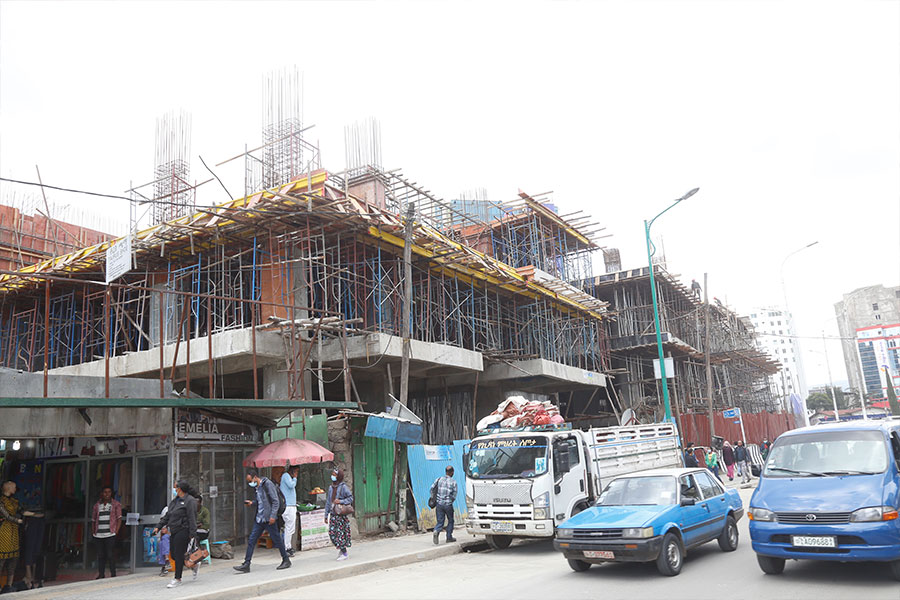
My Opinion | 131770 Views | Aug 14,2021
Dec 28 , 2024
By Indermit Gill , Aaditya Mattoo
The services sector's trajectory is closely tied to the spread of digital technologies, and the benefits are unevenly distributed. But even among the poorest countries, services present a promising path to prosperity. In this commentary provided by Project Syndicate (PS), Indermit Gill, chief economist and senior vice president for development economics at the World Bank, and Aaditya Mattoo, its chief economist of the East Asia & Pacific Region, urge policymakers to reject a false dichotomy between services and manufacturing and instead embrace a model that maximises the sector's potential to deliver growth and jobs.
The economic terrain has seldom been so slippery for developing countries around the world, especially the poorest. Low-income countries have already suffered a lost decade, with virtually zero per capita income growth since 2010. Many middle-income countries are coming to terms with a demographic shift that puts them at risk of growing old before they grow rich. Many high-income countries risk stagnation because of sky-high debt and anaemic productivity growth.
Such conditions are not conducive to international comity, at least not of the kind that fueled so much progress after the fall of the Berlin Wall in 1989. Developing economies will need to get better at fending for themselves, and while some are already preparing to do so, they are operating with an antiquated policy framework.
In the third decade of the 21st Century, does it really make sense for developing countries to place an all-or-nothing bet on manufacturing?
New research from the World Bank shows clearly that it does not. Developing countries would do far better to put services in the lead role, with manufacturing and agriculture serving as the supporting cast.
Services include a wide range of activities—finance, health, tourism, logistics—and the benefits they generate spill over to other sectors. Yet, relative to manufacturing, they continue to get a bad rap. They are notoriously slow to innovate, hard to trade, and difficult to free from regulatory restrictions. Yet services now account for more than two-thirds of global GDP and half of global trade (once we factor in services used in manufacturing and agriculture).
Among those seizing the opportunities offered by trade in services, the most striking examples come from the home of the "Asian miracle." While the textbook manufacturing-led model of economic growth once worked wonders in East Asia, these countries' circumstances and needs have changed. Their populations are ageing quickly, the global economy is becoming more fragmented, and they are adapting. Over the past decade, our research shows that the share of services grew from 44pc of economic activity in China to 53pc, and from 44pc to 48pc in other economies across East Asia. These sectors now account for nearly 50pc of employment in the region, up from 42pc a decade ago.
This shift reflects the rapid rise of digital technologies – nearly three-quarters of people in East Asia and the Pacific now have access to the internet, a sevenfold increase from 2000 – as well as modest trade liberalisation for services. The result is an Asian economic renaissance. Opening services to competition has fueled higher labour productivity even in manufacturing and agriculture, where firms can check prices, deliver goods, and receive payments much more efficiently.
Across all major economies in East Asia and the Pacific, services now contribute more than manufacturing to overall labour-productivity growth, an essential condition for higher wages. In Vietnam, for example, labour productivity climbed by 2.9pc after the government eased restrictions on foreign entry and ownership in several services sectors between 2008 and 2016, reform commitments that were part of Vietnam's accession to the World Trade Organisation (WTO). Manufacturing firms that use these liberalised services registered a 3.1pc annual increase in labour productivity, and the biggest beneficiaries were small and medium-sized private enterprises.
The rise of services in East Asia has yielded other important benefits. It is powering foreign direct investment (FDI), with the growth rate in services exceeding that of manufacturing by a factor of five. It is also driving demand for higher-skilled workers. Nearly 40pc of formal workers in digital services in East Asia today have a university degree or higher, double the rate for workers in other sectors. And the same trend is unlocking greater economic opportunities for women, because the ratio of female to male workers tends to be higher in the services sector than in manufacturing, and the proportion of women in the workforce grows as the level of economic development increases.
These are all essential ingredients for long-term growth. But, because the trajectory of services is so closely tied to the spread of digital technologies, developing economies have not benefited equally. The countries with the fastest growth in services tend to be upper-middle-income economies, especially in East Asia. In such economies, services have gone from a 40pc share of GDP in 1970 to about 50pc today. In low-income countries, however, services as a share of GDP are still about 40pc, pretty much the same as in 1970.
Yet even in the poorest countries, services represent a promising path to future prosperity. They can help all countries move from low- to middle- to high-income status. But first, we should reject the false choice between supporting services and supporting manufacturing. Policymakers should do both, while maximising the potential of the services sector to deliver growth and jobs.
PUBLISHED ON
Dec 28,2024 [ VOL
25 , NO
1287]

My Opinion | 131770 Views | Aug 14,2021

My Opinion | 128153 Views | Aug 21,2021

My Opinion | 126099 Views | Sep 10,2021

My Opinion | 123719 Views | Aug 07,2021

Dec 22 , 2024 . By TIZITA SHEWAFERAW
Charged with transforming colossal state-owned enterprises into modern and competitiv...

Aug 18 , 2024 . By AKSAH ITALO
Although predictable Yonas Zerihun's job in the ride-hailing service is not immune to...

Jul 28 , 2024 . By TIZITA SHEWAFERAW
Unhabitual, perhaps too many, Samuel Gebreyohannes, 38, used to occasionally enjoy a couple of beers at breakfast. However, he recently swit...

Jul 13 , 2024 . By AKSAH ITALO
Investors who rely on tractors, trucks, and field vehicles for commuting, transporting commodities, and f...

Jul 5 , 2025
Six years ago, Ethiopia was the darling of international liberal commentators. A year...

Jun 28 , 2025
Meseret Damtie, the assertive auditor general, has never been shy about naming names...

Jun 21 , 2025
A well-worn adage says, “Budget is not destiny, but it is direction.” Examining t...

Jun 14 , 2025
Yet again, the Horn of Africa is bracing for trouble. A region already frayed by wars...

Jul 6 , 2025 . By BEZAWIT HULUAGER
The federal legislature gave Prime Minister Abiy Ahmed (PhD) what he wanted: a 1.9 tr...

Jul 6 , 2025 . By YITBAREK GETACHEW
In a city rising skyward at breakneck speed, a reckoning has arrived. Authorities in...

Jul 6 , 2025 . By NAHOM AYELE
A landmark directive from the Ministry of Finance signals a paradigm shift in the cou...

Jul 6 , 2025 . By NAHOM AYELE
Awash Bank has announced plans to establish a dedicated investment banking subsidiary...